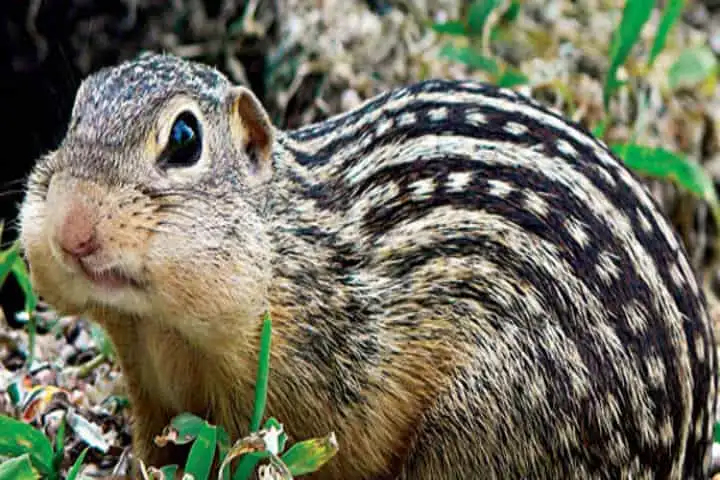Even though hibernation may seem a good idea in these cold wintry days, during this long spell when metabolism slows down to nearly 99 per cent, there is still need for vital nutrients like proteins to keep the muscles going. A new study of the 13-lined ground squirrel by scientists from the University of Wisconsin–Madison showed that these creatures are helped in this by the microbes in their guts as per a report in scitechdaily.com.
This finding is important as it could help in treating people with muscle-wasting disorders and also assist astronauts in the long space voyages.
Talking about the study, its co-author Hannah Carey, who is an emeritus professor in the UW–Madison School of Veterinary Medicine observed: “The longer any animal doesn’t exercise, bones and muscles start to atrophy and lose mass and function. Without any dietary protein coming in, hibernators need another way to get what their muscles need.”
The study was published the journal Science recently.
Nitrogen is an essential component for proteins and amino acids and it collects in all beings, including humans, as urea. The scientists were aware that urea moved into the digestive tract of the squirrels could be broken down by some gut microbes as they also require nitrogen for their own proteins. What scientists were keen to know is if some of this urea nitrogen that the microbes freed was used by the squirrels.
To find that this, urea made with trackable isotopes of carbon and nitrogen was injected into the squirrels’ blood. This was done in three stages. These included the active days of summer, early in winter hibernation, and late in winter. Besides this, some of these rodents were given antibiotics to remove most of the microbes in the intestines. As foreseen by the researchers, isotope-containing nitrogen was released by some of the gut microbes that broke down urea that had been injected.
Also read: Finally, scientists explain the ‘teapot effect’, the dribbling of the liquid outside the teapot
Sharing details of this method, the co-investigator of the study, Fariba Assadi-Porter said: “We followed that nitrogen to (the) livers (of the squirrels), primarily — where it is used to make many proteins — and some to muscles. We believe we’re seeing the isotope-labelled nitrogen molecules go from the host to the microbiome, then converted to usable molecules by the microbes before coming back to the host again, essentially being ‘recycled’ in the hibernating animal.”
Assadi-Porter is an UW–Madison emeritus biochemist who specializes in tracking the isotopes and is ls also a scientist in Integrative Biology and the university’s Nuclear Magnetic Resonance Facility.
Scientists during their study also found two differences that supported this microbial path. There was far less trackable nitrogen in the liver and muscles of those creatures whose gut microbes had been reduced to a great extent by antibiotics. On sequencing the genome of microbes found in the guts of the squirrels, researchers found that as the hibernation in winter dragged, there was spike in genes that are connected with the production of urease enzyme.
Elaborating on this Carey said: “Urease is not made by animals. Only microbes that express urease are able to split the urea molecule and release its nitrogen. As long as the right microbes are present, it’s a transaction between them and the host — each get some of the nitrogen released to tide them over until hibernation ends.”
Also read: 200 Million Years From Now, India, Somalia, Kenya and Madagascar may merge into a super-Continent
Knowledge about survival during hibernation could bring relief to those who are on low-nitrogen diets or those with disorders that lead to muscles to atrophy. Further it could make long and lengthy trips to far away planets possible for humans.
Keeping space travellers in a state of hibernation means that they wouldn’t need to carry take much food, water, and oxygen, and thereby produce less waste and carbon dioxide. This means saving on fuel and weight.
Highlighting this, Matthew Regan the study’s co-author said: “This process could theoretically reduce rates of muscle loss in space, where microgravity exposure invariably leads to muscle atrophy. And because characteristics of hibernation beyond this gut microbe-dependent process confer protection against other hazards of space flight such as ionizing radiation, it is theoretically possible that, if translated to humans, hibernation-like states could solve numerous challenges of human spaceflight simultaneously.”
Regan was a former UW–Madison postdoctoral researcher and now is a professor of animal physiology at the University of Montreal.




















